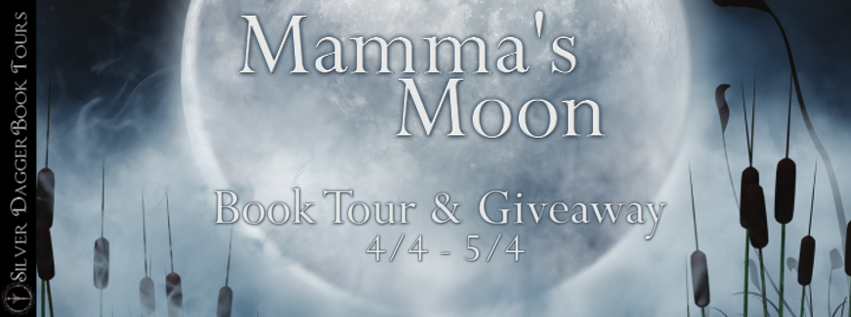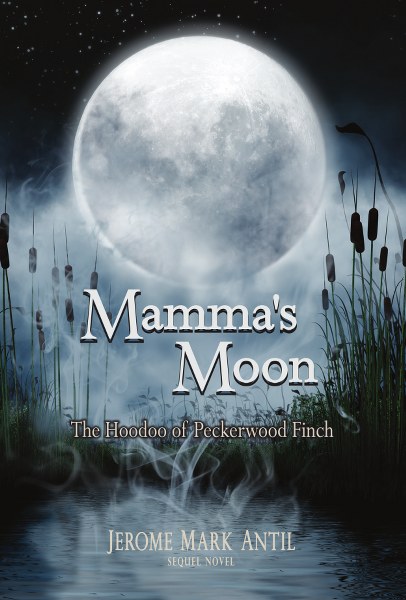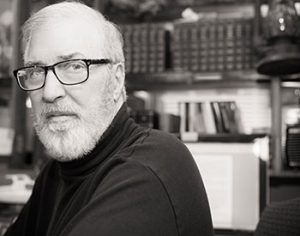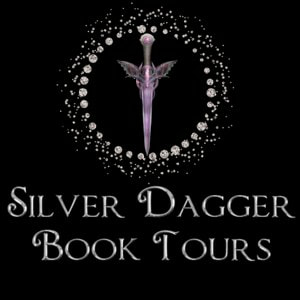Mamma's
Moon
The
Hoodoo of Peckerwood Finch
by
Jerome Mark Antil
Genre:
Thriller
"Jerome
Mark Antil's Mamma's
Moon does
for Acadiana what Truman Capote did for Tiffany's or Tennessee
Williams did for streetcars. This is a novel about a lot of things,
including sex, crime, life, and death. But most of all, it's a novel
about hope and about love.
Mamma's
Moon gives the reader a dramatic and insightful glimpse into the very
special world of today's Louisiana French Acadians, whose early
tragic history was immortalized by Henry Wadsworth Longfellow in his
classic poem, Evangeline,
even before the heartless bayou's more contemporary history was
buried deep and forgotten." Tom Hyman (LA
Times bestselling
author: writer for LIFEmagazine, The
Saturday Evening Post, Argosy, Washington
Post Book World and New
York Magazine.)
This
novel, Mamma's
Moon, is
a sequel to the novel, One
More Last Dance. It
stands alone as an entirely self-contained story, but for those of
you who may not have read the earlier novel, I include here a brief
description of the main characters and of the events that preceded
this story.
A
bond that can only happen on a dance floor happened in a cafe off
Frenchman Street among four unlikely characters: a man who was about
to die; his friend, an illiterate Cajun French yardman; and two of
the most successful women in New Orleans.
Aging
Captain Gabriel Jordan, retired, was given two months to live, three
months before he met "Peck"--Boudreau Clemont Finch--a
groundskeeper on the back lawn of his hospice on Bayou Carencro,
Louisiana. It was at the hospice that Gabe told Peck his dream of
seeing the Newport Jazz Festival before he died. They became friends,
and Peck offered to help grant his wish by taking him there.
And
they began their journey.
It
quickly became a journey with complications and setbacks. They saved
each other many times, but they were in turn saved by two
extraordinary women: Sasha (Michelle Lissette), a real estate agent
in New Orleans's posh Garden District, and her best friend, Lily Cup
(Lily Cup Lorelei Tarleton), a criminal attorney.
Less
than a year before the events in Mamma's
Moon, Gabe
and Peck wandered into Charlie's Blue Note, a small jazz bar in a
side alley just off Frenchman Street, where the music was live and
mellow and the dancing warm and sensual.
Here
they encountered Sasha and Lily Cup, and amid the music, the dancing,
the food, the flirting, and the cigar smoke, the four formed an
unusual and lasting friendship that would see them each through a
series of crises, disappointments, life-threatening situations, and
moments of great joy and satisfaction.
- Take us behind the scenes – where did “One More Last Dance” and “Mamma’s Moon” come from?
(Three people inspired One More Last Dance. After he was
given his Last Rights by the priest and the doctor gave him two hours to live,
I inspired a 94-year-old friend to get out of his death bed, live a year and a
half longer and write his book. Another friend from the 1960s inspired my Gabe;
a black man who taught me jazz. My father, the third was second generation
Acadian, from Normandy, and a marvelous storyteller. Mamma’s Moon was
inspired by an actual attempt on my life.)
- What will fans of the first book in this series, “One More Last Dance,” enjoy about “Mamma’s Moon?”
(That the characters they love from the original novel are alive
and well. They’ll like that the sequel is as strong or stronger than the first
novel – which is rare.)
- What can you tell us about your Acadian heritage and its influence on your writing?
(I knew our name was changed from Anctil to Antil when my grandparents
(on my father’s side) moved to the U.S. from Canada at the turn of the
twentieth century. I grew up in New York State, but my father would always tell
me stories about the Acadians in Canada and the Cajuns of Louisiana, and he
would have shrimp boils and make gumbos.)
- Why are you so passionate about honoring and preserving Louisiana’s culture through writing?
(What’s happening to Louisiana both from outside sources and
internal power control is criminal. Baton Rouge has literally become the rectum
of America with the Mississippi splitting it in half and along with it the
literacy and natural resources so mishandled the entire state is sliding into
the Gulf of Mexico. Try to find a full-grown Cypress. You can’t. They been
chipped and are stacked in “mulch” bags in big box home store retailers.)
- What was your research process like? Specifically, how did you go about investigating the culture of Louisiana? Did you learn something you didn’t know previously?
(I had a New Orleans young man interview icon Ms. Leah Chase. He
asked her several pages of my questions about life in New Orleans in her
lifetime. I asked the criminal court in New Orleans to help my legal research
and they assigned a criminal attorney to guide me. I spoke with libraries there
and got pointed at things of interest. I was overwhelmed at the damage that has
been caused to Louisiana by the indiscriminate spillway levees that destroyed
entire towns and all the topsoil. A passenger plane crash that was forgotten
about.) LINK
- You wrote part of “Mamma’s Moon” while staying at the Pontchartrain Hotel in uptown New Orleans where Tennessee Williams worked on “A Streetcar Named Desire” – did absorbing the atmosphere there strengthen your writing?
(I
wrote much of One More Last Dance there, and some of Mamma’s Moon.
It absolutely inspired me knowing that Tennessee Williams lived there, and
Truman Capote frequented the bar. Hearing the streetcars going by and the jazz
in the lobby certainly inspired me.) LINK
- Chef Leah Chase is known in Louisiana – and around the world – as the Queen of Creole Cuisine. How did you meet this iconic New Orleans celebrity, and how did she help shape your book?
(My
wife and I ate at the famous Dooky Chase restaurant one evening after a Barnes
and Noble book signing. Leah invited us to the kitchen, and we chatted, and I
gave her a copy of my One More Last Dance novel. I wrote her a thank you
letter. Six months later I hired a young man I had met at the Pontchartrain to
visit her and see if he could interview her on my behalf. Leah welcomed him in
with open arms and sat with him for more than an hour.)
- You also turned to Orleans Parish Criminal Court Judge Laurie A. White for some guidance. What role did she play while you were writing “Mamma’s Moon?”
(Judge
Laurie A. White played three important roles in the Peckerwood Finch novels.
She asked for attorney volunteers to guide me in my court scenes. Attorney
Lindsay Jay Jeffrey, at the Orleans District Criminal Court spent countless
hours helping me. Judge White had me watch court in session for ideas and she
also made suggestions to easing the dialect in One More Last Dance –
which has since been revised. Judge White will be narrating the audio books of
each novel.)
- What role did your daughter play in inspiring you to become a writer?
(She
asked me to write the bedtime stories I used to tell her, about growing up
during WWII. She also asked me to write a booklet for fathers going through
divorce. I wrote the very simple Handbook for Weekend Dads and it was a
four-year Amazon bestseller in category. It’s been purchased in every state and
17 countries. My wife Pamela encouraged me to turn my stories into books.)
- Your favorite writers include Mark Twain, Sir Arthur Conan Doyle, Ernest Hemingway and John Steinbeck. While we know these are some of the greatest writers in history – what draws you to their work?
(John
Steinbeck for his historical integrity and sensitivity for human nature in
private moments. Hemingway has taught me most, the more I write. He inspires me
to ‘write what I 6
know’ – and talk the way people talk so they can read it.
Mark Twain taught me to graft short stories together into a novel. Doyle was
always an easy, fun read.)
- When you were a child, your family moved to Delphi Falls, New York, and the land occupied by your boyhood home is now a state park. And soon, there will be historical markers referencing you and your The Pompey Hollow Book Club series. What can you tell us about that?
(A
retired Syracuse University professor donated the near million dollars to buy
the land and make it a park. The two waterfalls are the draw – but as I grew up
there will be advantage to me and my works as it is my childhood home. They
will make my books available there – and markers at key points (my campsite –
my bedroom – the rock we sat on. I’ll be attending an official opening.)
- What’s next for you? Will readers hear from Peck Finch again?
(I’m
writing about Tall Jerry and the Delphi Falls Trilogy – which are
condensed novels that took place in 1953. I’m looking at options for Peck and
gang. I’m also several chapters into a novel about America being taken over –
but it frightened me enough to step away from it awhile.
JEROME
MARK ANTIL writes in several genres. He has been called a
“greatest generation’s Mark Twain,” a “write what you know
Ernest Hemingway,” and “a sensitive Henry Wadsworth Longfellow.”
It’s been said his work reads like a Norman Rockwell painting.
Among his writing accomplishments, several titles in his The Pompey
Hollow Book Club historical fiction series about growing up in the
shadows of WWII have been honored. An ‘Authors and Writers’ Book
of the Year Award and ‘Writer of the Year’ at Syracuse University
for The Pompey Hollow Book Club novel; Hemingway, Three Angels, and
Me, won SILVER in the UK as second-best novel.
Foreword’s
Book of the Year Finalist for The Book of Charlie – historical
fiction and The Long Stem is in the Lobby – nonfiction humor.
Library Journal selected Hemingway, Three Angels and Me for best
reads during Black History Month.
Before
picking up the pen, Antil spent his professional career writing and
marketing for the business world. In this role, he lectured at
universities - Cornell, St. Edward’s, and Southern Methodist. His
inspirations have been John Steinbeck, Mark Twain, and Ernest
Hemingway.







No comments:
Post a Comment